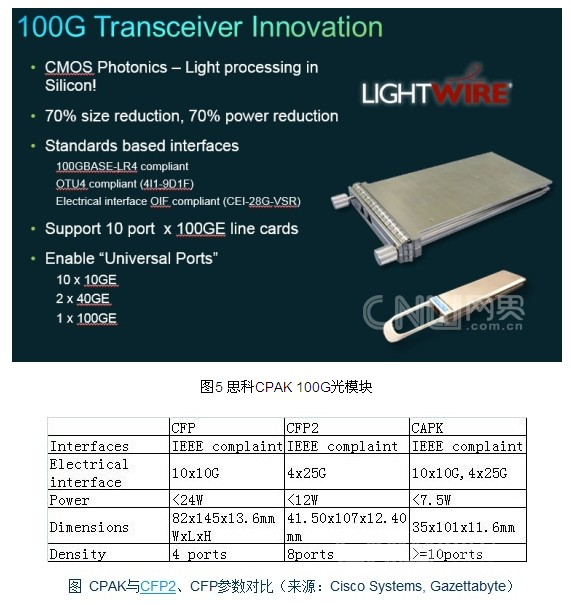In general, Cisco has been pursuing the "IP + optical network" integration solution. Its core strategy is to optimize the optical communication technology for IP services, while providing a smooth migration path to maximize the protection of operators' existing investments. Nehib told reporters that in order to improve the "IP + optical network" solution, Cisco continues to innovate and develop a variety of related technologies. Such as multi-layer control plane technology nLight, zero-touch optical network layer (Touchless OpTIcal Layer), IP-over-DWDM, management integration, etc. Among them, nLight is mainly used to achieve control panel automation and IP and optical network integration (Cisco Core Router CRS-3 already supports nLight technology, thus achieving a mixture of IP and optical network layer), and zero-touch optical network is Cisco optical control panel contact , It is completely based on software control and does not require physical intervention.
Facing the increasingly hot 100G market, Nehib said that Cisco now supports 100G products very comprehensively, including core router CRS, edge router ASR9K, 100G WDM product 15454-M6 and data center switch Nexus 7K.

Cisco optical network development process 
Cisco's optical network layout 
Cisco 100G Product Overview
Cisco exhibited the independently developed CPAK 100G optical module at this year's OFC (American Optical Fiber Communication Exhibition), which caused a lot of shock in the industry. Nehib said that the current mainstream 100G optical modules are CXP and CFP. Due to the small transmission distance of CXP, the application deployment scenarios are very limited. CFP supports more standard types, so CFP has become the mainstream module for medium and long distance transmission. But CFP is also flawed, its size and power consumption are very large. The power consumption of a single optical module will reach about 25 watts. Therefore, based on the acquired Lightwire technology, Cisco developed a self-made CPAK 100G optical module (see Figure 5 and Table 6 for details).

Cisco CPAK 100G optical module, Jefferies & Co analyst James Kisner believes that CPAK has stimulated downstream suppliers, Finisar seems to be the most affected, because the company has 5% of its revenue from the supply of CFP optical modules for Cisco.
In the 100G DWDM network, Cisco has successfully implemented 4800 km 100G coherent DWDM technology without Raman amplification or signal regeneration. More than 50 users have completed the test deployment of Cisco 100G DWDM.
In addition, Nehib also revealed that Cisco will release CPAK-based 100G DWDM Line Card and FS-ROADM solutions this year.
Wang Bojian, Solution Architect of the Cisco China Telecom Operator Business Unit, said in public that based on the observation and analysis of operators and the industry chain over the years, Cisco believes that in the 100G era, the proportion of operators ’investment will change significantly. In the 10G and 40G eras, operators 'investment in IP and routing is relatively large, but as the cost of optical devices declines slowly, in the future 100G era, operators' optical investment will account for a more important proportion. Therefore, such a development trend predestined how the future network evolution is to consider the deep integration of IP and optical. Cisco's goal is to make IP and optical more closely integrated in the 100G era.
Energy Efficient LED Desk Lamp that will reduce energy spending by 75%
Applications:
1. Reading, writing,drawing, design,computer operation,documentation in office, or home lights.2. Meeting, office welfare, opening ceremony, move, foreign affairs, wedding, celebration.
3. working, suitable light for eye-care
4,relax, warm white give you comfortable light sense
LED Table Lamp With Battery
LED Table Lamp With Battery,Portable Table Lamp With Battery,Portable LED Table Lamp,Battery Operated Table Lamps,LED Table Lamp
Shenzhen Superlight Technology Co., Ltd. , https://www.superlighttech.com